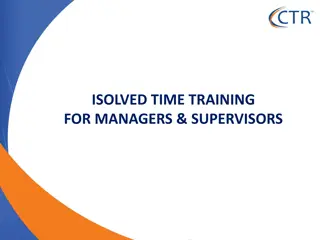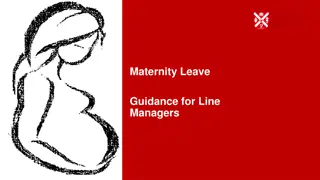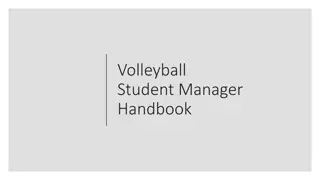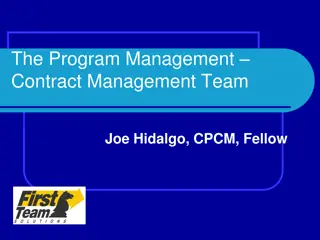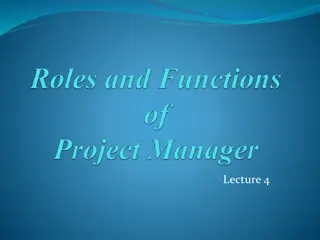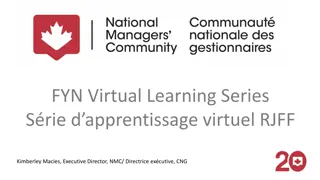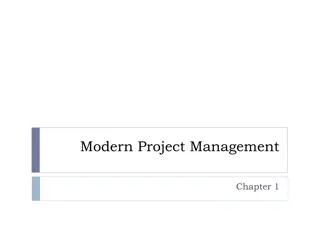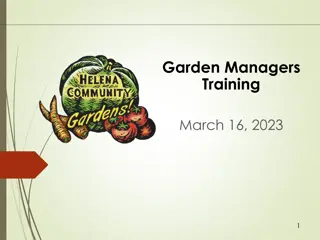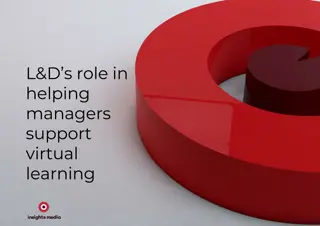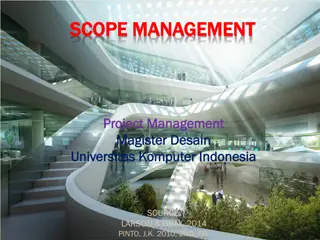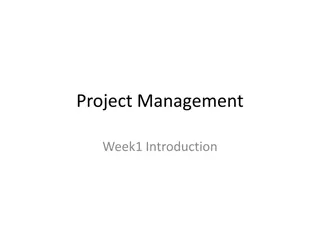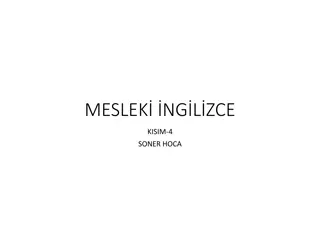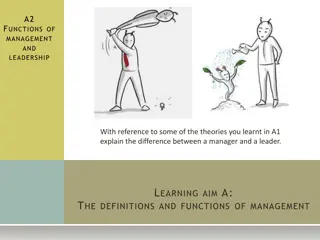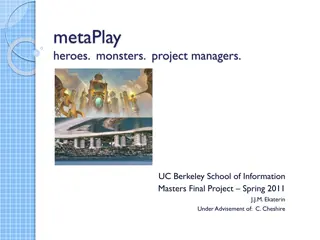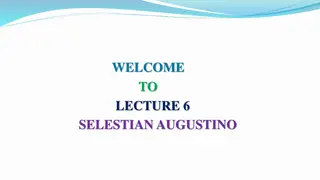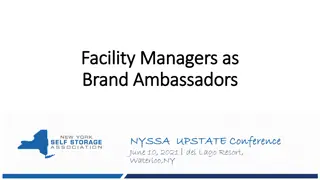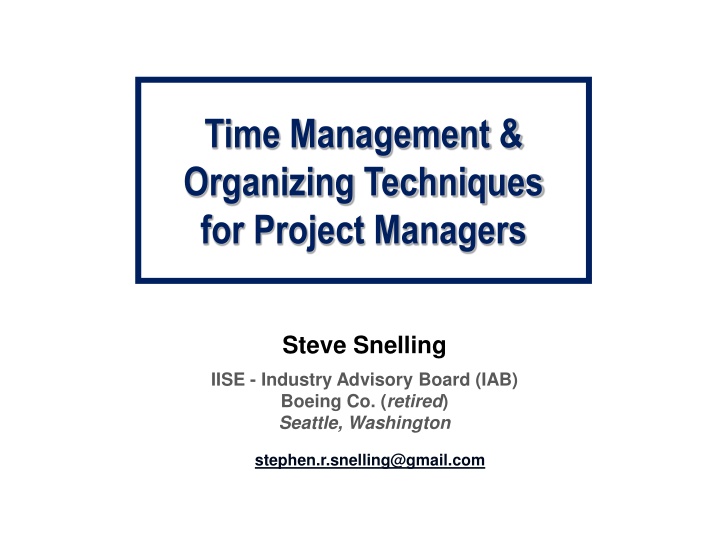
Effective Time Management and Organizing Techniques for Project Managers
Discover effective time management and organizing techniques for project managers in this insightful guide by Steve Snelling, a seasoned professional with extensive experience in industrial engineering, consulting, and project management. Learn how to enhance productivity, prioritize tasks, and optimize schedules to achieve project success efficiently.
Download Presentation

Please find below an Image/Link to download the presentation.
The content on the website is provided AS IS for your information and personal use only. It may not be sold, licensed, or shared on other websites without obtaining consent from the author. If you encounter any issues during the download, it is possible that the publisher has removed the file from their server.
You are allowed to download the files provided on this website for personal or commercial use, subject to the condition that they are used lawfully. All files are the property of their respective owners.
The content on the website is provided AS IS for your information and personal use only. It may not be sold, licensed, or shared on other websites without obtaining consent from the author.
E N D
Presentation Transcript
Time Management & Organizing Techniques for Project Managers Steve Snelling IISE - Industry Advisory Board (IAB) Boeing Co. (retired) Seattle, Washington stephen.r.snelling@gmail.com
My Background My Background B.S. in Industrial Engineering at Virginia Tech & additional Consulting & Projects training (later) Co-Op student (7 work quarters while in college) Worked 5 yrs. as an Area Industrial Engineer Worked 12 yrs. as a Management Consultant (worked in 25 states & Canada) Worked 23 yrs. with the Boeing Co. as an IE-Special Projects Manager (retired) [ 747, 767, 777 & 787 airplanes ] __________________ [ [: __________________ IISE - Industry Advisory Board (IAB) IISE Fellow Past President of Seattle IISE Chapter Past President of PSEC (Puget Sound Engineering Council) - made up of 22 local engineering societies University of Washington, Student IISE Chapter advisor 2
Introduction Introduction There are a lot of good books and articles on Time Management. But many of the techniques are easy to forget or ignore in daily practice. Probably the best application of good time management & organizing skills is to try a few of the available techniques and see what works best for you. Also, look carefully at the wasteful time-consuming habits that you currently have and try to minimize or eliminate them. 3
Have a Good Plan Have a Good Plan A good place to start is to lay out what overall needs to be done, and back-schedule some of the major milestones (or critical activities) that relate to a particular end goal for a project or activity. The more complex the project the more time it will take to accomplish the phases or major tasks. This can be a simple Plan for a single complex activity, or it can be an involved Plan that includes several complex activities (and some less complex activities that also must be included). Utilize good Project Planning software, for complex Projects. 4
Manage Your Schedule Manage Your Schedule You have to manage your day, your week, your month, and your entire year. Good time management begins & ends with how you schedule your work time, and to some extent how you schedule your free time. If you let the work day manage you (with too many meetings or distractions), there is really no way to control your time. Build a schedule that allows you to be effective and productive. 5
Manage Your Schedule Manage Your Schedule (continued) When scheduling your time (or others ) it helps if you ve been realistic about the time it took to accomplish similar tasks in the past. Usually, it is better to build in extra time to accomplish difficult tasks (since you may encounter unplanned delays or setbacks). Finishing something ahead of schedule is much preferred, over finishing something late or past the due date. 6
Manage Your Resources Manage Your Resources When dealing with your own Time Management, you respect & manage your available time. You need to be realistic about your work on difficult tasks, don t over-schedule yourself as a resource. Sometimes this means saying No to new projects or activities, if you don t have the time to finish something within the deadline needed, without a major impact on other activities equally important. It also includes the need to sometimes share the workload or delegate tasks (if this is an option), and respect their time as well. It is important to manage critical resources, such as Subject-Matter-Experts. 7
Create Project & Activity Lists Create Project & Activity Lists Short, simple lists whether hand-written on post- it-notes or formally typed up on a computer can keep several activities from being ignored or forgotten. The use of good lists can also free your mind up to focus on the important activities, since you can t prioritize things until they have been listed. The lists will give you a visual queue of how you are progressing with completing tasks. The lists can also help you organize the sequence and dependency of related tasks. 8
Prioritize Your Activities Prioritize Your Activities The best way to focus your time better, is to spend a proportional amount of time on the items that are really important. Multiple projects can have different priorities at any given time (based on critical deadlines, etc.), But on any given day, you should know the priorities of the work scheduled for that day, and spend your time on them, accordingly. 9
Avoid Procrastination Avoid Procrastination There is a natural tendency to put off difficult or time-consuming tasks, or just not get started on time. It can help to break complex projects into phases or blocks of manageable work but it is important to not delay the start of an important project. The loss of available time to complete a complex task or project is impacted greatly if any procrastination is involved. A good approach to eliminating procrastination is to jot down some ideas and a rough approach for a complex problem as soon as it has been added to your workload. 10
Avoid Procrastination Avoid Procrastination (continued) This allows you to think early and often about the upcoming tasks necessary to complete a new, complex project. It also lets you visualize completing the project, which is very helpful in developing an overall Plan and for being motivated to start & stay engaged on a project. Often working with others on small teams, can help keep the momentum going on a large complex project; it also allows for individual strengths to help the overall activity. 11
Stay Focused When Working Stay Focused When Working When you are working on important activities, concentrate & stay focused on what you are doing, and eliminate all distractions (no meetings, phone calls, or e-mail). A focused 30 minutes on a single important task can be a very useful way of making progress on a project. Break up the work day with enough variety that you are making progress on several important tasks on different projects. Start by only trying to do 3 or 4, 30-minute, intense work sessions a day then do more each day as you are able. 12
Document Your Results Document Your Results A good way to monitor your performance (or a small group s performance) on a complex activity is to have some measurable results throughout the activity, and not just focus on the end product. By having an ongoing view (and review) of progress throughout a complex activity it allows for adjustments or alternate approaches to be utilized, if necessary. It is important for the documentation to be related to the end results, and be a useful portion of the project (and not just a status report). 13
Use Parts of Your Day Differently Use Parts of Your Day Differently Determine when you typically have more quiet time & fewer meetings, and use that time to plan & think in a focused way. When you have limited time between meetings, use that time for work-related e-mails, phone calls, and even electronic filing. If you have public travel time (by airplane, train, bus, or van) use that time to read correspondence and do some planning for the next event (or for the next day). Try to use the end of each workday to do some preparation for the next day (or at least the first activities of the next day). 14
Use Parts of Your Day Differently Use Parts of Your Day Differently (continued) Leave the top of your physical desk neat and organized, with everything needed within an arm s reach (such as an in-basket, stapler, pen & pencil, note pad, etc.). 15
Organize Your Electronic Files Organize Your Electronic Files It is important to be able to find electronic files quickly & easily, including work-related documents & e-mails. Develop a simple folder & filing system on your computer and any shared File Servers. The easier it is to find critical documents and correspondence, the less time is wasted searching for needed information. Something as simple as being able to access all the names & e-mail addresses of project members, or using a standard format for reports & correspondence can save considerable time and frustration. 16
Organize Your Electronic Files Organize Your Electronic Files (continued) Even how you name folders and files, can help you retrieve important information quickly. How you organize the desk top on your computer screen, is just as important as how you organize your work desk & office area. 17
Use Manila Folders for Printouts Use Manila Folders for Printouts Often Projects require you to save and carry around printouts and hard copy documents. An easy way to do this is in individual manila folders that hold typical 8 x 11 sized printouts. These folders can each have a label/title (handwritten in pencil, so the folders can be re- used later). Folders can easily be placed out on your physical work desk, or filed away in hanging folders in file drawers in your desk (or a separate filing cabinet) when not actively being used (or at the end of each day). 18
Use Manila Folders for Printouts Use Manila Folders for Printouts (continued) One or two folders can also be carried to meetings, along with a nice writing pad portfolio for taking meeting notes. Even in today s electronic, digital age paper printouts are often generated and will need to be saved & organized. Sometimes an individual printout can have multiple uses such as taking notes directly on the bottom portion of a meeting announcement that may also have the list of invited attendees names at the top of the page. 19
Practice Scan Reading Practice Scan Reading Scan Reading is very useful for getting through magazines & newspapers, and can help when doing research (either on the Internet or in textbooks). Scan Reading is not the same as Speed Reading. Scan Reading initially focuses on looking at the outline of a document or source. Does it have a Table of Contents, Index, or other outline that tells you where items are located? Most magazines have a Table of Contents & maybe a Featured Articles page that can be very helpful in deciding if the topic (based on the title or a brief description) is of interest to you. 20
Practice Scan Reading Practice Scan Reading (continued) Once at the article, usually there is a brief synopsis (just under the title), or the first paragraph will often tell you what the story or write-up is about. After reading these you can decide if to read any more of the article (or if busy, mark it for a full reading later). An important part of Scan Reading is to give yourself permission not to have to read something cover-to-cover (like a newspaper, magazine, or a book). 21
Keep Learning and Growing Keep Learning and Growing Leave some time each week to improve your performance and efficiency. Look objectively at the time that was wasted and try to improve how you manage your time each week, and each month. Read improvement books, take in-house or external classes and talk to others about how they have improved their Time Management skills. 22
Build a Good Time Management Build a Good Time Management System for Yourself System for Yourself Utilize all of the Time Management & Organizing techniques that work best for you. Modify and experiment on a regular basis, so you are always improving. Keep using the system that you create for yourself, and monitor your results to make sure it continues to work for you. 23
List of Techniques Covered List of Techniques Covered 1. 2. 3. 4. Have a good Plan Manage Your Schedule Manage Your Resources Create Project & Activity Lists Prioritize Your Activities Avoid Procrastination Stay Focused When Working 8. 9. 10. Organize Electronic Files 11. Use Manila Folders for Printouts 12. Practice Scan Reading 13. Keep Learning & Growing 14. Build a Time Management System for Yourself Document Your Results Use Your Day Differently 5. 6. 7. 24


